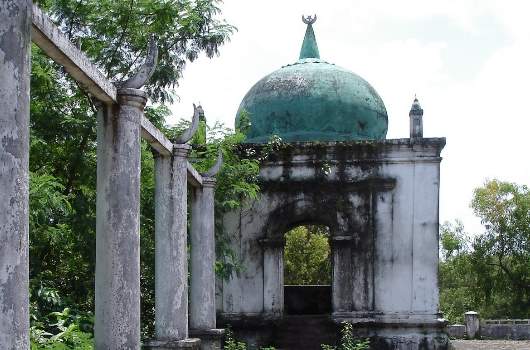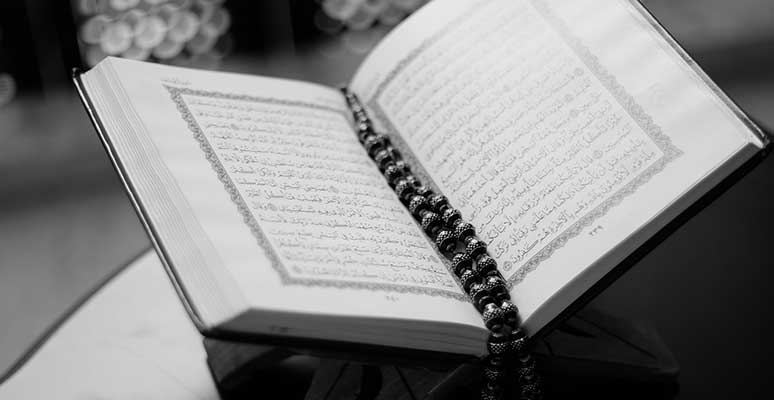I’m sure you’ve heard of the Portuguese influence in Goa. All those pretty ‘Donas’ and their Gorgeous Mando dances, all the yummy Portuguese Goan sweets and festivals are so well known today. Did you know that Goa also had a strong Muslim influence? In fact, before the Portuguese came to Goa, Adil Shah (The ruler of the South Indian Kingdom of Bijapur) ruled over Goa. It was only in 1510 that Afonso de Albuquerque captured Goa and took over. There are several beautiful Mosques that still stand tall in Goa and bear testament to that era of Muslim rule in Goa. On the eve of Muharram, let us take a look at some of these mosques and greet the Muslims living in this state with thanks for their contribution to our history.
This article is dedicated to all the Muslims – the Mullas/Mujawars, Sayeds, Shaikhs (the Portuguese called them Xecs), Khans/Pathans, Khojas, Bhatiars (cooks), Bhoras (merchants) and Manyars (bangle-makers) who continue to enrich our lives here in Goa. At Muharram, let us remember them in prayer.
Let’s begin with the Tar Surla Mosque and the Safa Masjid. History says that by 1560 itself Adil Shah had built at least 26 mosques in Goa. Two of the most famous mosques are the Tar Surla Mosque and the Safa Masjid. Yes, there are two other mosques mentioned here in this blog – The Namazgah in Bicholim which was built by Akbar and The Jama Masjid in Sanguem of whose history, not much is known.
Safa Mosque at Ponda
The Safa Shahouri Masjid in Ponda taluka, located about a kilometer from the center of Ponda, is Goa’s biggest and most famous of mosques. The mosque itself bears no inscription but historians are certain it was built in 1560 by Ibrahim Adil Shah, the ruler of Bijapur.

Pic Credit: Google Images
Adjacent to the mosque is a beautiful 30×30-meter masonry tank with small chambers with ‘meherab’ designs. (The Meharab design is a semi-circular niche in a wall. It indicates the direction of the Kabba in Mecca. Initially, the term ‘meherab’ was used to denote the prophet Muhamed’s own private prayer room which, incidentally, provided access to the adjacent mosque. The word also has origins in the word hariba (meaning – to fight). So miḥrāb would mean “battlefield” or “place of a fight (with Satan).”
Originally, on the eastern front, the mosque and the tank, had a charbagh type garden with beautiful laterite walkways. The precincts also had many laterite stone columns, most of which are now missing. This historic piece of Islamic architecture has been rightfully marked as a heritage site by the Archaeological Survey of India.
Tar Sulra Mosque @ Bicholim

Pic Credit: Google Images
In Portuguese, the word ‘tar’ means the ferry point of the village. The village named Surla in Bicholim has a ferry point near it. The mosque is quite close to that ferry point. This mosque too has a tank, just like the Safa Mosque. However, it is smaller, almost a miniature version of that one. It too has semi-circular ‘meherab’ niches. The mosque has Chambers where the faithful can offer namaaz.
Commendable Communal harmony in the area of Bicholim
While Bicholim is famous for this mosque, it is also famous for the Hindu Shigmo festival. Interestingly, in Bicholim, Muslims also take part in the Shigmo festival.
In fact, in Surla, Bicholim, the five-day long Shigmo festival does not conclude unless the villagers go in procession accompanied by musical instruments such as the ghumot, shamel and kansale and offer prayers of gratitude to the Pir-Saheb (the pious Muslim saint who bridged the gap between the Hindus and Muslims) at the mosque. This ceremony is called the Bhovartalo.
Jama Masjid @Sanguem
Not much is known about the History of this beautiful Masjid, except that it was built sometime after the Inquisition period in Goa and it was reconstructed and renovated in 1959.
The major highlight of this architectural beauty is the dome-shaped structure in the center and the tall minarets on all four sides. It is a simple place of worship, with cool marble flooring. The main hall has an elevated platform. Three steps lead to the top. The religious leader stands and addresses his faithful followers from here. The mosque also serves yummy food after prayers.

Pic Credit: goa.gov.in
Namazgah Masjid @ Ponda
Namazgah Mosque was constructed by the Mughal ruler Akbar himself. It is located on a picturesque hill in the Bicholim river area. The tomb of Hazrat Abdullah Khan Shahid lies here. It is said that the famous Maratha King, Sambhaji, visited his tomb and prayed that he should win over the Portuguese rulers. Sambhaji also offered a generous grant for the maintenance of this mosque.

Pic Credit: goa.gov.in
According to some historians, when Akbar forged an alliance with the Rajputs and other Hindu rulers, Sambhaji treated Akbar respectfully and allowed him a pension. Later, Akbar assisted Sambhaji to capture Goa. In 1683, Akbar built the Namazgah mosque of Bicholim in Goa to celebrate their victory over Goa.
To all our Muslim friends in Goa… our prayers are with you during Muharram. God Bless.


